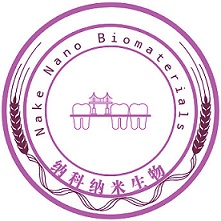中国粉体网讯 骨骼是人体的支架,参与全身代谢,是人体运动系统重要组成部分。然而由于疾病、老龄化、交通事故频发等因素的影响,骨损伤病例逐年增加,因而骨替代材料的需求不断增加。近些年,以羟基磷灰石为代表的骨替代材料以及羟基磷灰石涂层逐渐成为临床应用的宠儿。
纳米羟基磷灰石的特点及制备方法:
纳米羟基磷灰石是一种新型的无机 瓷材料,具有独特的生物学活性,克服了传统的羟基磷灰石难塑性,脆性大,降解慢等特点,具有很高的化学活性,有利于增加材料的生物活性,且表面积增加,有利于细胞附着、生长。
瓷材料,具有独特的生物学活性,克服了传统的羟基磷灰石难塑性,脆性大,降解慢等特点,具有很高的化学活性,有利于增加材料的生物活性,且表面积增加,有利于细胞附着、生长。
人体骨宏观和微观构造
纳米羟基磷灰石的诱导新骨生成的能力是其他材料所无法比拟的,目前制备方法多采用水热法、沉淀法、超生合成法、溶胶-凝胶法、微乳液法和液固合成法等化学合成法。
纳米羟基磷灰石的应用
众所周知,羟基磷灰石是骨骼的天然组分之一,因其抗腐蚀性强、骨诱导生成性强,而且体内可降解的特点广泛应用于人体骨仿生再生材料以及羟基磷灰石涂层,目前是骨修复领域中研究最为广泛的材料之一。
但是现有的研究结果表明,纯的羟基磷灰石虽然具有优良的生物相容性与生物活性,但力学性能较差,不能用作承重植入材料。而另一种骨替代材料医用钛及钛合金材料,虽然具有优良的力学性能,但耐磨性差、同时属于生物惰性材料,与骨的结合是一种机械锁合。

有鉴于此,在医用钛及钛合金表面制备羟基磷灰石生物陶瓷涂层是目前国内外的研究热点,具有重要的理论及实践意义。
以钛合金为基底,利用等离子喷涂技术制备的羟基磷灰石涂层,涂层与基底结合强度高,该材料植入人体后,钛合金可以提供足够的力学强度,表面的羟基磷灰石涂层易于与人体骨结合,在人体骨表面诱导新骨的生成,一般数月即可诱导新骨的生成。但在体内植入后出现涂层脱落的现象还有待进一步研究。
结语:
纳米级羟基磷灰石在生理环境下性能稳定,可以为骨细胞的黏附、生长提供了良好的支撑,使骨细胞易于贴附,分泌多种成骨分化因子,并且在骨细胞钙化过程中,纳米羟基磷灰石还为骨细胞钙化成骨提供晶核,发挥骨传导作用。
纳米羟基磷灰石材料是骨修复领域中的佼佼者,虽然骨替代材料的研究困难重重,但随着纳米与生物技术在医用材料领域的不断渗透,粉体界的骨科医生(纳米羟基磷灰石)的医术会更加高明!
China Powder Network News
Skeleton is the scaffold of human body, which participates in the whole body metabolism and is an important part of human motion system. However, due to diseases, aging, frequent traffic accidents and other factors, the number of cases of bone injury increases year by year, so the demand for bone substitute materials is increasing. In recent years, bone substitutes represented by hydroxyapatite and hydroxyapatite coatings have gradually become the favorites of clinical application.
Characteristics and preparation methods of nano-hydroxyapatite:
Nano-hydroxyapatite is a new kind of inorganic ceramic material with unique biological activity. It overcomes the characteristics of traditional hydroxyapatite, such as difficult plasticity, brittleness and slow degradation. It has high chemical activity. It is beneficial to increase the biological activity of the material, increase the surface area, and facilitate cell attachment and growth.
Macroscopic and Microscopic Structure of Human Bone
The ability of nano hydroxyapatite to induce new bone formation is unparalleled by other materials. At present, the chemical synthesis methods, such as hydrothermal method, precipitation method, superbiological synthesis method, sol-gel method, microemulsion method and liquid solid synthesis method, are used in the preparation.
Application of nano-hydroxyapatite
As we all know, hydroxyapatite is one of the natural components of bone. Because of its strong corrosion resistance, bone induction and biodegradability in vivo, it is widely used in bionic bone regeneration materials and hydroxyapatite coatings. It is currently one of the most widely studied materials in the field of bone repair.
However, the existing research results show that pure hydroxyapatite has excellent biocompatibility and biological activity, but its mechanical properties are poor, so it can not be used as load-bearing implant materials. Another bone substitute material, medical titanium and titanium alloy, has excellent mechanical properties, but poor wear resistance and belongs to biological inert material. Bone bonding is a kind of mechanical locking.
In view of this, the preparation of hydroxyapatite bioceramic coatings on medical titanium and titanium alloys is a research hotspot at home and abroad, which has important theoretical and practical significance.
The hydroxyapatite coating prepared by plasma spraying technology on titanium alloy substrate has high bonding strength with the substrate. After implantation, the titanium alloy can provide sufficient mechanical strength. The hydroxyapatite coating on the surface is easy to bond with human bone and induces the formation of new bone on the surface of human bone. Generally, the formation of new bone can be induced in a few months. However, the phenomenon of coating shedding after implantation in vivo remains to be further studied.
Conclusion:
Nano-hydroxyapatite is stable in physiological environment. It can provide a good support for the adhesion and growth of osteocytes, make osteocytes easy to adhere to, secrete a variety of osteogenic differentiation factors. In the process of osteocyte calcification, nano-hydroxyapatite also provides nucleus for osteocyte calcification and osteogenesis, and plays the role of bone conduction.
Nano-hydroxyapatite materials are outstanding in the field of bone repair. Although the research of bone substitute materials is difficult, with the continuous penetration of nano-technology and biotechnology in the field of medical materials, the orthopaedic surgeon (nano-hydroxyapatite) in the powder industry will be more skilled!



